The most efficient heating: the most profitable options
Energy efficient heating systems are becoming increasingly relevant in the context of rapid growth in energy prices. We want to consider the most optimal heating of a country house, taking into account various factors and features of modern systems.

Heating efficiency
Criteria

In order to find out what constitutes the most efficient heating system, it is necessary to determine the criteria for this efficiency, and on the basis of these criteria compare various options.
Indicators of effectiveness can be such factors:
- Unit cost of thermal energy produced by the system. This is one of the main indicators that affects the choice of a specific solution. This parameter directly depends on fuel tariffs;
- System reliability. It takes into account the service life, maintainability, the likelihood of accidents and breakdowns, the quality of heating equipment and pipes;
- Cost of equipment, materials and installation work. Even the highest quality equipment must have a reasonable price, otherwise the meaning of its installation disappears. It is important to take into account the complexity of installation and the ability to install by hand;
- Autonomy of work. Efficient heating systems must work without operator intervention, otherwise you will have to hire a stoker or stay at home by yourself;
- The complexity of care and maintenance. If a boiler house produces a lot of waste and requires frequent cleaning, inspections, etc., then it can hardly be called highly efficient;
- Comfort. The ultimate goal of any climatic equipment is the comfort in the room that this equipment serves.
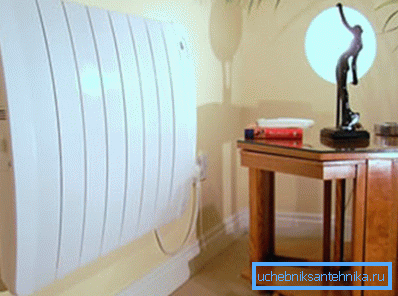
Note! In addition to obvious factors, such as the cost of fuel and equipment, there are a number of related points to keep in mind: delivery of energy to the boiler room, storage of fuel in proper condition, energy costs (automation, pumps) and other indirect losses.
The most profitable for the consumer is a centralized heating system. However, it is difficult to call it highly efficient and as comfortable as possible, since you cannot regulate its work properly, and the efficiency of state-owned equipment and thermal insulation has long been at the bottom.
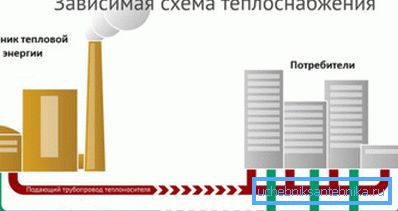
Note! If we are talking about autonomous heating, then we will have to consider various options for its organization, and we should start with the type of system, type of coolant and method of distributing pipes. It should be remembered that, in contrast to the centralized filing, all risks and expenses are borne by the consumer, so the question should be approached as responsibly as possible.
System type

Heating systems may differ in various parameters; we will begin our consideration with the most significant difference: according to the type of heat carrier.
There are three main types:
- Water heating. Here, as a coolant, there is water or another liquid that circulates through the pipeline, transferring heat from the boiler furnace to radiators;
- Air heating. As everyone guessed, the coolant here is air, which is heated in a special heat generator and is supplied through ventilation ducts or special air ducts;
- Electric heating. This refers to a system operating without a heat carrier due to the generation of heat by passing current through a heating element or by emitting waves in the infrared range. Examples: electric underfloor heating, convectors, oil heaters, IR panels, IR tapes, etc.

If we talk about efficiency in terms of all the factors listed above, the air heating loses due to the complexity of the system, the high cost of equipment and maintenance, the complexity of design and installation. The instruction recommends applying such solutions in large public facilities - swimming pools, sports or shopping and entertainment centers, train stations and hospitals.
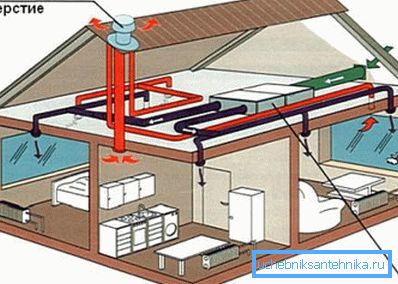
Electric heating is the most convenient from the point of view that energy is supplied directly to your house in the most convenient form: electric current is easily converted into heat directly on the spot, without the need to use boilers, heat carriers, pipes and other equipment.

However, the price of one kilowatt-hour of electricity is so high compared to other types that the use of the electrical system in our time can be considered a luxury.
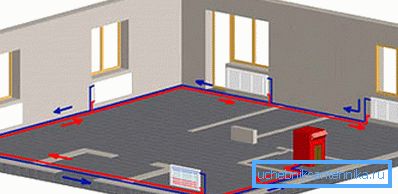
Note! Water heating is a compromise among other types, as it is reliable, effective, relatively cheap and quite comfortable. The main disadvantage of this solution is the need to build a pipeline, install radiators and buy a boiler. But since we have no alternatives, we choose a water system.
Circulation and layout

Since we have chosen the water variant, we should immediately say about the method of organizing the circulation of the coolant and distributing the pipes. There are systems with natural and forced circulation, in the first case, the water moves due to the difference in density of the hot and cooled mass, in the second case it is pumped by the circulation pump.

We will not go into the physics of the process, however, we note that forced circulation is considered more effective. Despite the costs associated with buying a pump and paying for the electricity it consumes, the savings remain substantial.

Equally important radiator wiring.
Three options are possible here:
- Single pipe scheme. Radiators are connected to the pipe in series when the output of one device is connected to the input of the next. The least suitable option for our criteria;
- Two-pipe system. Radiators are connected to two pipes in parallel, a coolant is supplied through one pipe, and the other is returned;
- Collector system. From the distribution manifold to each device there are two pipes, supply and return. The most effective, but also the most expensive and complex way of distributing pipes.
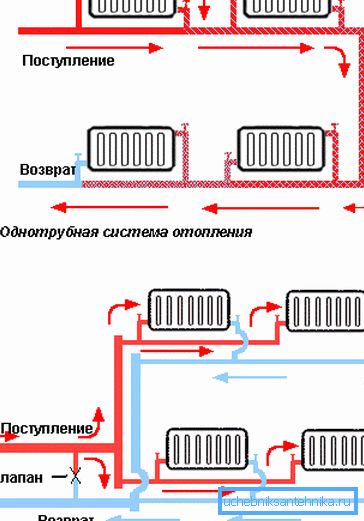
Note! For a small room it is more profitable to use a two-pipe scheme, since it is cheaper and simpler, but for a large house with many rooms, collector wiring would be preferable. There are variants of combined schemes, where two pipes go to the radiators, and the collector distributes water in the contours of the heated floor.
Equipment
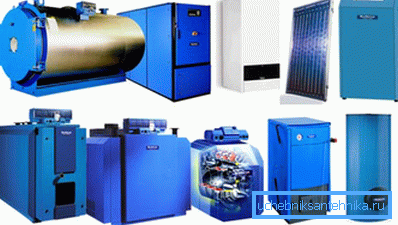
If we talk about the equipment, you should consider different models of boilers. The main difference between the two is the type of fuel used.
We will not dwell on each model in detail, but simply arrange them in the order of the greatest benefit and expediency:
- In the first place with a large margin are gas boilers connected to the central highway. They are much cheaper to operate, reliable, have high efficiency and fully automatic control system;
- The second place is occupied by units on solid fuel. Despite a number of maintenance inconveniences, these devices remain among the most reliable and inexpensive;
- In third place - electric boilers and convectors. These devices are the most convenient, easy to use, safe and affordable, but the cost of electricity makes them unprofitable from an economic point of view;
- Diesel units are the least preferred, since the price of diesel makes them one of the most expensive to operate, and diesel fuel requires delivery and storage in special tanks.

Also important are final heaters. The most efficient heating radiators are bimetallic products from aluminum and steel, as well as aluminum and copper. Cast iron batteries also proved to be reliable and inexpensive devices.
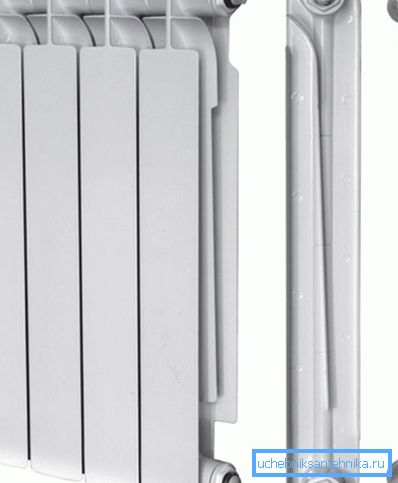
Conclusion
The most effective from our point of view would be a two-pipe water or collector heating system with forced circulation, working on the main gas. For more information, see our video and read other materials on our site.